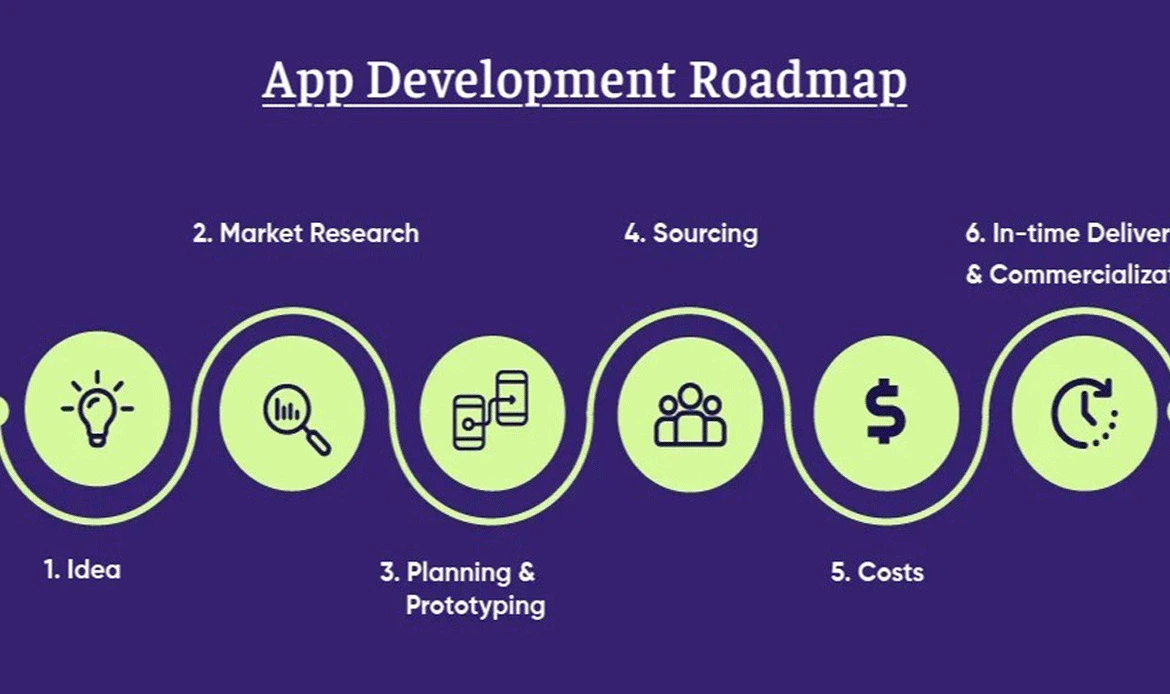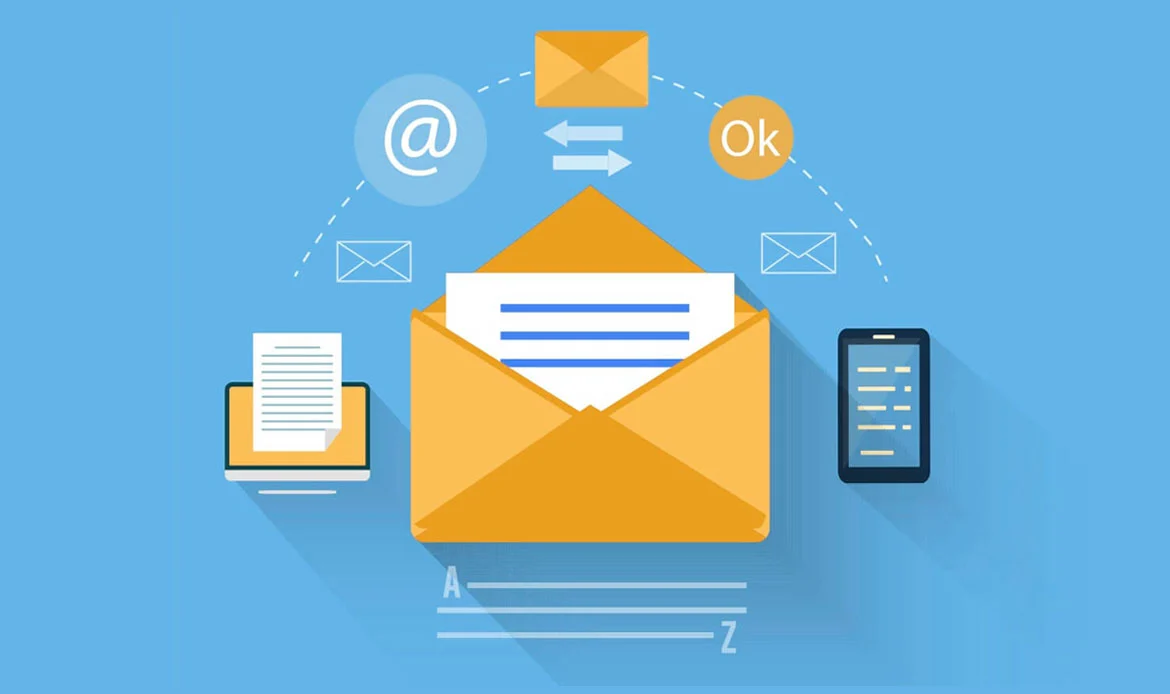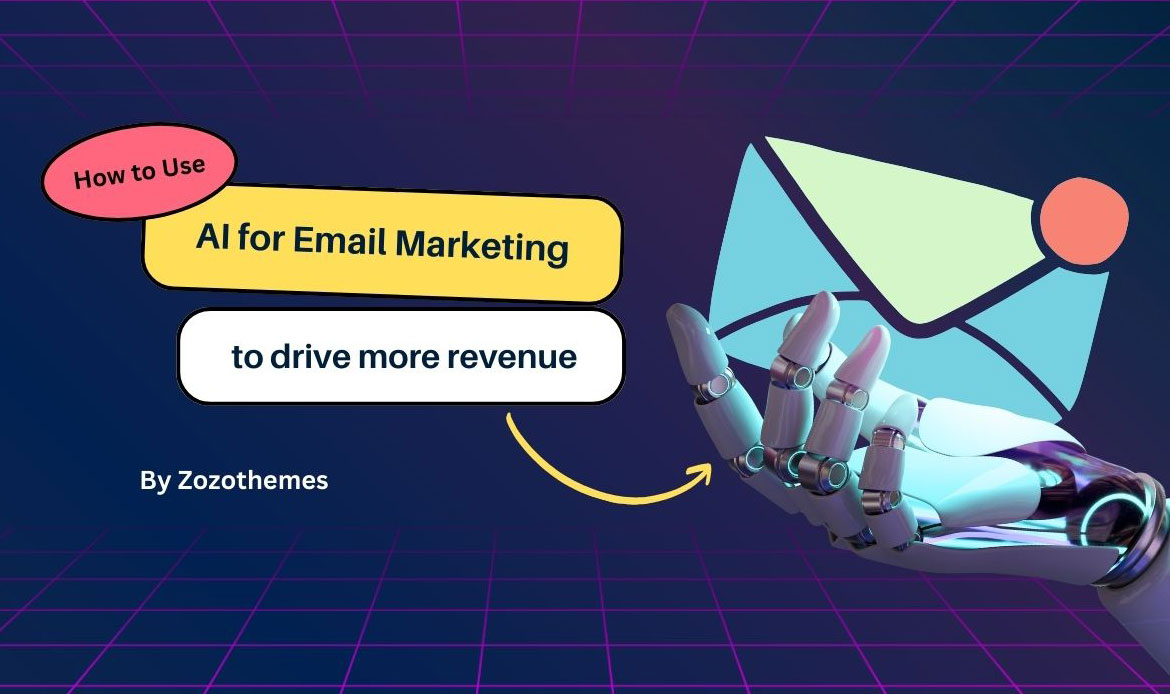The Evolution of Email Marketing
 Before delving into the transformative potential of AI, let’s take a moment to appreciate the evolution of email marketing. From simple newsletters to sophisticated, data-driven campaigns, email marketing has come a long way. However, the advent of AI introduces a paradigm shift, introducing efficiency, personalization, and automation on a scale previously unimaginable.
Before delving into the transformative potential of AI, let’s take a moment to appreciate the evolution of email marketing. From simple newsletters to sophisticated, data-driven campaigns, email marketing has come a long way. However, the advent of AI introduces a paradigm shift, introducing efficiency, personalization, and automation on a scale previously unimaginable.
21 Fresh Steps on AI for Email Marketing Revenue Growth
Step 1: Set Clear Objectives
Define your email marketing goals. To do this effectively, you need to identify key performance indicators (KPIs) that align with your overall business objectives. KPIs are quantifiable metrics that help measure the success of your campaigns. Common email marketing KPIs include open rates (the percentage of recipients who open your emails), click-through rates (the percentage of recipients who click on links within your emails), and conversion rates (the percentage of recipients who take a desired action, such as making a purchase). For example, if one of your objectives is to increase product sales, your chosen KPIs might include the conversion rate, indicating how many recipients completed a purchase after clicking through your email. Overall, Step 1 lays the foundation for a focused and measurable email marketing strategy.Step 2: Build a Quality Email List
Ensure you have a clean and well-segmented email list. The use of AI tools is recommended to enhance the process of managing and segmenting your email list. AI can analyze vast sets of customer data, including demographics, past behavior, and preferences. For example, if your customer data reveals that certain subscribers frequently engage with a particular product category, you can create a segment specifically for them. This segmentation enables you to send targeted and personalized emails that are more likely to resonate with each subgroup. The result is a more efficient and effective email marketing strategy that caters to the diverse needs and preferences of your audience.Step 3: Choose an AI-powered Email Marketing Platform
Several email marketing platforms, such as Mailchimp, SendGrid, and Salesforce Marketing Cloud, offer AI-driven functionalities designed to elevate your campaigns. These AI features typically include advanced personalization options, robust analytics, and automation capabilities.
✔ PersonalizationAI-driven personalization goes beyond basic customization. These platforms leverage AI algorithms to analyze user behavior, preferences, and historical interactions. This analysis allows for the creation of highly tailored and individualized email content that resonates with each recipient on a more personal level.
✔ AnalyticsAI-powered analytics enable more sophisticated and insightful data analysis. These platforms use AI algorithms to interpret large sets of data, providing marketers with deeper insights into campaign performance, user engagement, and trends. This information allows for more informed decision-making and the optimization of future campaigns.
✔ AutomationAI-enhanced automation is a key feature in modern email marketing platforms. These platforms use AI to automate various aspects of the email marketing process, from sending personalized emails based on user behavior to dynamically adjusting campaign elements for optimal performance. This level of automation not only saves time but also ensures a more targeted and timely approach to communication.
Step 4: Implement Personalization
Use AI to personalize your email content based on individual customer behavior and preferences. Leverage dynamic content that adapts to each recipient, including personalized product recommendations and tailored messaging. AI plays a crucial role in implementing advanced personalization techniques by analyzing vast sets of customer data. This analysis includes factors such as past purchase behavior, browsing history, interaction with previous emails, and demographic information. By understanding each individual’s unique preferences and actions, AI enables you to create highly personalized and relevant content.Step 5: Optimize Send Times
Use AI algorithms to analyze the historical data of your subscribers and identify the optimal times for sending emails. This ensures that your emails reach recipients when they are most likely to engage. By doing so, you can pinpoint the optimal times for sending emails. This strategic approach ensures that your emails are delivered at times when recipients are most likely to be active and engage with your content, thereby enhancing the overall effectiveness of your email marketing efforts.Step 6: Subject Line Optimization
Implement AI tools to analyze and optimize email subject lines. AI can predict which subject lines are more likely to capture the attention of your audience and improve open rates. Artificial intelligence is applied to predict which subject lines are most likely to capture the attention of your audience, consequently leading to improved open rates. By leveraging AI in this way, you can fine-tune your subject lines based on data-driven insights, increasing the likelihood that recipients will open and engage with your emails.Step 7: A/B Testing
A/B Testing, the approach involves utilizing AI for conducting A/B tests on different elements within your emails, including copy, images, calls-to-action, and design. A/B testing is a method where two or more variations of a component are compared to determine which performs better. AI facilitates this process by automating the testing and analysis of multiple variables simultaneously.Step 8: Predictive Analytics
The strategy involves employing AI-powered predictive analytics to anticipate customer behavior. This advanced technology enables you to identify potential leads by analyzing patterns and trends in historical data. The insights gained from predictive analytics allow you to segment your audience based on anticipated engagement levels. Subsequently, you can tailor your email content to each segmented group, creating more targeted and relevant communication. By leveraging predictive analytics, you proactively align your email marketing efforts with potential customer behaviors, enhancing the precision and effectiveness of your campaigns.Step 9: Automated Email Campaigns
Implement AI-driven automation for email campaigns. This involves setting up trigger-based emails that are automatically sent based on specific customer behaviors or events. Examples of such trigger-based emails include welcome emails for new subscribers, reminders for abandoned shopping carts, and personalized product recommendations based on past customer behavior.Step 10: Monitor and Analyze Performance
Regularly monitor the performance of your email campaigns using AI analytics tools. Regular monitoring involves assessing key performance indicators (KPIs) such as open rates, click-through rates, and conversion rates. AI analytics tools aid in processing and interpreting large sets of data, providing valuable insights into the performance of your campaigns. By leveraging this technology, you can identify trends, patterns, and areas for improvement.Step 11: Feedback Loop and Iteration
Establish a feedback loop by collecting customer feedback and analyzing the performance of your campaigns.This involves actively seeking and incorporating customer feedback alongside a thorough analysis of campaign performance using AI analytics tools. By establishing this feedback loop, marketers gain valuable qualitative and quantitative insights that inform iterative improvements to their strategies.Step 12: Compliance and Data Security
Compliance and Data Security, the focus is on ensuring that AI-driven email marketing strategies adhere to data protection regulations, such as the General Data Protection Regulation (GDPR). This step underscores the importance of safeguarding customer data and prioritizing security measures to establish and maintain trust with your audience. Compliance with data protection laws is crucial for respecting individual privacy rights and maintaining the integrity of your marketing practices.Step 13: Utilize Natural Language Processing (NLP)
The strategy involves integrating Natural Language Processing capabilities into your email campaigns. Natural Language Processing is a branch of artificial intelligence that focuses on understanding and interpreting human language. By incorporating NLP tools into your campaigns, you enable your system to analyze the tone and sentiments expressed in customer communications. This valuable insight allows you to better understand the emotions and preferences of your audience.Step 14: Implement Machine Learning for Content Optimization
Utilize machine learning algorithms to analyze the performance of different content types, layouts, and styles in your emails. This enables you to optimize future campaigns by focusing on the content that resonates most with your audience.Step 15: Smart Segmentation
Refine your audience segmentation using AI algorithms to identify more granular and nuanced segments based on user behavior, preferences, and engagement patterns. This allows for even more targeted and personalized content delivery.Step 16: Dynamic Pricing and Product Recommendations
Integrate AI-driven algorithms for dynamic pricing and personalized product recommendations in your emails. This is particularly useful for e-commerce businesses, as it enhances the relevance of your offers and increases the likelihood of conversions.Step 17: Predictive Lead Scoring
Implement predictive lead scoring using AI to identify and prioritize high-value leads. By analyzing customer behavior, AI can help you focus your efforts on leads that are more likely to convert into paying customers.Step 18: Multichannel Integration
Integrate AI-enhanced email marketing with other marketing channels. This ensures a cohesive and personalized customer experience across various touchpoints, such as social media, website interactions, and mobile apps.Step 19: Stay Abreast of AI Developments
Keep yourself informed about the latest advancements in AI technology relevant to email marketing. As AI continues to evolve, staying current will help you leverage new tools and techniques to further enhance your email campaigns.Step 20: Continuous Learning and Optimization
Email marketing is an evolving landscape, and customer behavior can change over time. Embrace a culture of continuous learning and optimization. Regularly assess the performance of your AI-driven email campaigns, learn from the data, and make adjustments to improve results.Step 21: Measure Return on Investment (ROI)
Calculate the ROI of your AI-powered email marketing campaigns. Assess the revenue generated against the costs associated with implementing AI tools and technology. This analysis will help you determine the effectiveness of your strategy and allocate resources accordingly.Implementation Roadmap
 Building a clear implementation roadmap ensures that your adoption of AI for email marketing is strategic and results-driven. From setting goals and preparing data infrastructure to launching pilot campaigns and scaling personalization, each step in the roadmap helps streamline workflows, improve targeting, and maximize revenue growth.
Building a clear implementation roadmap ensures that your adoption of AI for email marketing is strategic and results-driven. From setting goals and preparing data infrastructure to launching pilot campaigns and scaling personalization, each step in the roadmap helps streamline workflows, improve targeting, and maximize revenue growth.
Assessment and Goal Setting in AI for Email Marketing
Begin by conducting a thorough assessment of your current email marketing efforts. Identify key performance indicators (KPIs) and set clear, measurable goals for improvement. Whether it’s increasing conversion rates, reducing churn, or enhancing overall engagement, having well-defined objectives is essential.Building the Right Data Infrastructure for AI for Email Marketing
Ensure that your data infrastructure is robust and capable of handling the influx of information generated by AI. Clean and organize your data to facilitate accurate analysis. AI thrives on quality data, so investing time in data hygiene pays dividends in the long run.AI Platform Selection for Smarter Email Marketing Campaigns
Choose an AI platform that aligns with your specific needs and integrates seamlessly with your existing email marketing tools. Consider factors such as ease of use, scalability, and the level of customization offered by the platform.Training and Integration of AI for Email Marketing Success
Provide comprehensive training to your team on how to effectively use the chosen AI platform. Integrate the AI seamlessly into your existing email marketing workflow, ensuring that it enhances rather than disrupts your processes.Start with Pilot Campaigns Using AI for Email Marketing
Before fully deploying AI across all your campaigns, start with pilot projects. Test the effectiveness of AI in a controlled environment, measure results, and make adjustments based on the insights gained. This iterative approach allows for continuous improvement.Segmentation and Targeting Powered by AI for Email Marketing
Utilize AI to create more granular audience segments based on behavior, preferences, and engagement history. Tailor your content to these segments to ensure relevance and increase the likelihood of conversion.Dynamic Content Optimization
Implement AI-powered dynamic content that adapts based on user behavior and preferences. From product recommendations to personalized messaging, dynamic content ensures that each subscriber receives a unique and tailored experience.Automated Customer Journey
Design automated workflows that guide subscribers through a personalized customer journey. From onboarding sequences to re-engagement campaigns, AI can predict the optimal timing and content for each touchpoint in the customer lifecycle.Monitoring and Analysis
Regularly monitor the performance of your AI-powered campaigns. Analyze the data generated to refine your strategy continually. Pay attention to patterns, user responses, and areas where AI can be further optimized.Feedback Loop
Establish a feedback loop where insights from your team and AI-generated analytics inform each other. This symbiotic relationship ensures that the human element remains integral to the strategic direction of your email marketing campaigns.Future Trends and Continuous Adaptation
 As AI continues to evolve, so too will its impact on email marketing. Keep a finger on the pulse of industry trends and emerging technologies. Continuous adaptation is key to staying at the forefront of innovation and maintaining a competitive edge.
From predictive analytics to AI-generated content, the future promises even more sophisticated tools to enhance your email marketing efforts. Embrace these advancements with a mindset of continual learning and improvement.
As AI continues to evolve, so too will its impact on email marketing. Keep a finger on the pulse of industry trends and emerging technologies. Continuous adaptation is key to staying at the forefront of innovation and maintaining a competitive edge.
From predictive analytics to AI-generated content, the future promises even more sophisticated tools to enhance your email marketing efforts. Embrace these advancements with a mindset of continual learning and improvement.
Your Guide to AI for Email Marketing Success
What is the role of AI in email marketing?
AI for email marketing helps businesses analyze customer behavior, segment audiences, personalize campaigns, and optimize send times. This makes emails more relevant, improves engagement, and ultimately drives more revenue.
How can I start using AI for email marketing to drive more revenue?
Begin by setting clear goals, choosing the right AI tools, and running pilot campaigns. Focus on segmentation, personalization, and predictive analytics. These steps ensure your AI for email marketing efforts deliver measurable revenue growth.
Is AI for email marketing suitable for small businesses?
Yes, even small businesses can benefit. Many AI-driven email marketing tools are cost-effective and easy to integrate. By automating personalization and targeting, AI for email marketing allows small businesses to increase conversions and drive more revenue without requiring a large team.
Final Thoughts
In conclusion, embracing the capabilities of Artificial Intelligence in your email marketing strategy is not just a choice; it’s a necessity in today’s dynamic digital landscape. By incorporating intelligent automation, data-driven insights, and personalized content, you’re not only streamlining your campaigns but also opening the door to unprecedented revenue growth. As we bid farewell to traditional methods, the era of AI-powered email marketing beckons, promising not just efficiency, but a profound connection with your audience.How to Use AI for Email Marketing to Drive More Revenue
With our modern digital marketing WordPress themes, you can seamlessly integrate AI tools, optimize campaigns, and track real-time performance — all from one place. Build smarter, convert faster, and grow your business with AI-driven precision.


